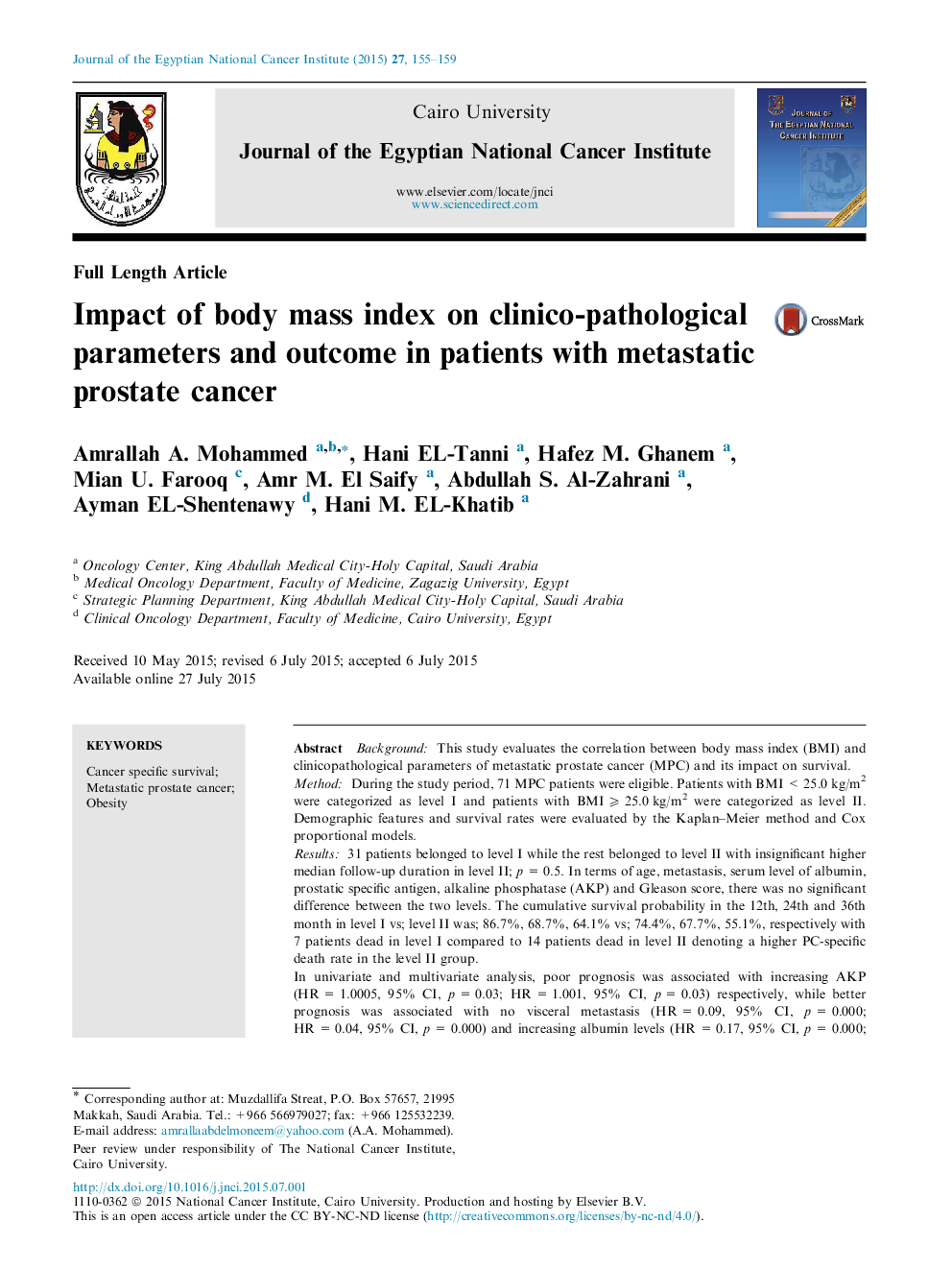| Article ID | Journal | Published Year | Pages | File Type |
|---|---|---|---|---|
| 3988962 | Journal of the Egyptian National Cancer Institute | 2015 | 5 Pages |
BackgroundThis study evaluates the correlation between body mass index (BMI) and clinicopathological parameters of metastatic prostate cancer (MPC) and its impact on survival.MethodDuring the study period, 71 MPC patients were eligible. Patients with BMI < 25.0 kg/m2 were categorized as level I and patients with BMI ⩾ 25.0 kg/m2 were categorized as level II. Demographic features and survival rates were evaluated by the Kaplan–Meier method and Cox proportional models.Results31 patients belonged to level I while the rest belonged to level II with insignificant higher median follow-up duration in level II; p = 0.5. In terms of age, metastasis, serum level of albumin, prostatic specific antigen, alkaline phosphatase (AKP) and Gleason score, there was no significant difference between the two levels. The cumulative survival probability in the 12th, 24th and 36th month in level I vs; level II was; 86.7%, 68.7%, 64.1% vs; 74.4%, 67.7%, 55.1%, respectively with 7 patients dead in level I compared to 14 patients dead in level II denoting a higher PC-specific death rate in the level II group.In univariate and multivariate analysis, poor prognosis was associated with increasing AKP (HR = 1.0005, 95% CI, p = 0.03; HR = 1.001, 95% CI, p = 0.03) respectively, while better prognosis was associated with no visceral metastasis (HR = 0.09, 95% CI, p = 0.000; HR = 0.04, 95% CI, p = 0.000) and increasing albumin levels (HR = 0.17, 95% CI, p = 0.000; HR = 0.15, 95% CI, p = 0.000) respectively. In multivariate analysis only, patients belonging to level I were associated with better prognosis (HR = 0.17, 95% CI, p = 0.02).ConclusionBMI is dependent on prognostic factors in patients with MPC.
